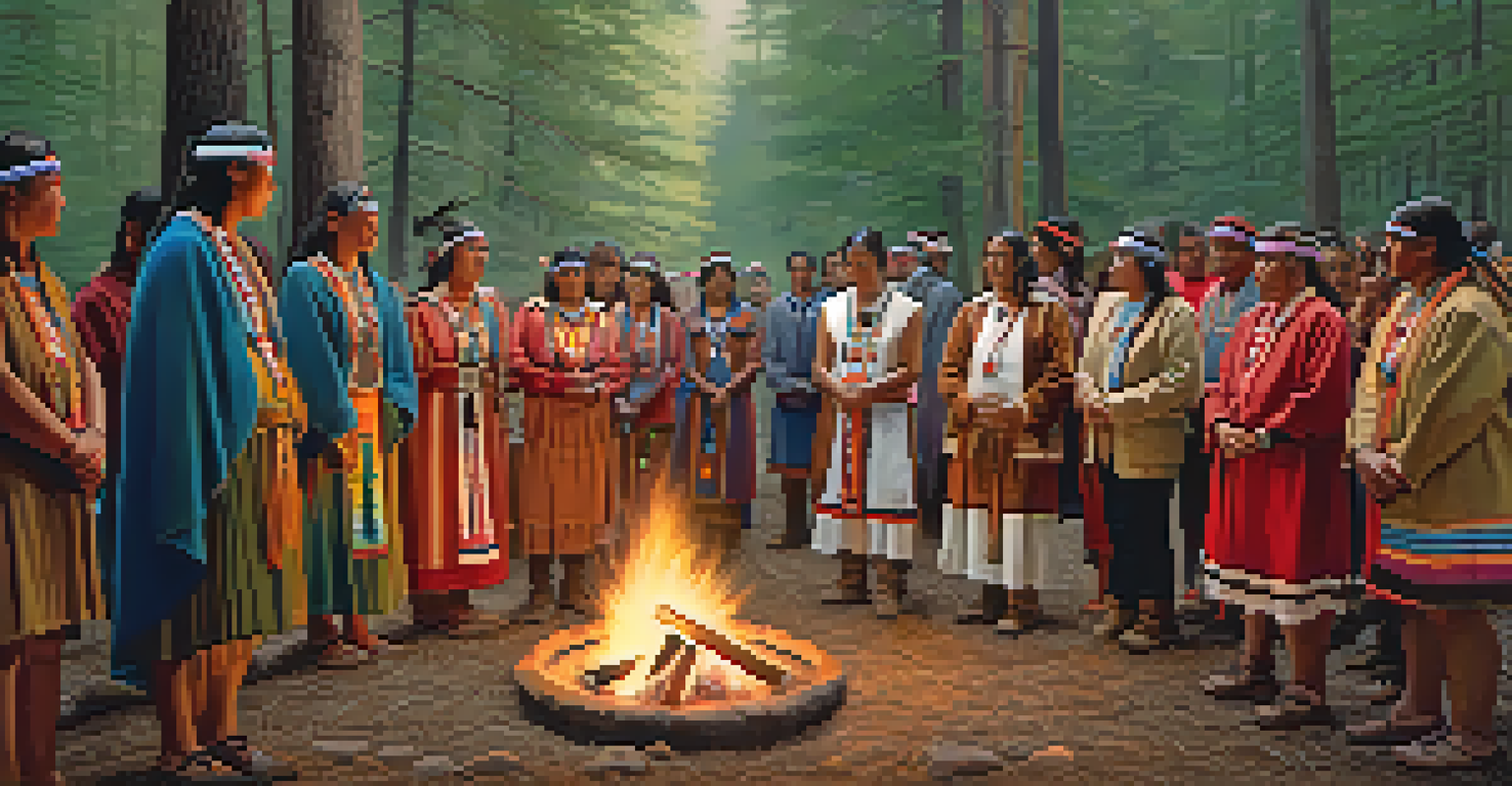Peyote and the Identity of Native American Communities

Understanding Peyote: A Cultural and Spiritual Symbol
Peyote, a small cactus native to Mexico and the southwestern United States, holds profound significance in many Native American cultures. For these communities, it is not just a plant, but a spiritual guide that facilitates communication with the divine. The use of peyote in religious ceremonies is rooted in centuries-old traditions, making it a vital component of their cultural identity.
Peyote is a sacred medicine, a bridge to the past, and a way to connect with the spirit within ourselves and our community.
The spiritual journey induced by peyote is often described as transformative, offering insights and healing. It’s important to understand that this experience is deeply personal and varies from individual to individual. For many, peyote serves as a bridge to their ancestors, a way to connect with their heritage and community.
As the world evolves and modern challenges arise, peyote remains a steadfast symbol of resilience and continuity for Native American peoples. This sacred cactus is more than just a substance; it embodies the spirit and values of the communities that cherish it.
The Historical Context of Peyote Use Among Native Americans
The history of peyote use among Native American tribes dates back thousands of years, intertwining with their social and spiritual practices. Many tribes, including the Huichol and the Native American Church, have long recognized peyote's sacred nature. This historical context is essential for understanding its role in contemporary Native American identity.

During the late 19th and early 20th centuries, the peyote movement gained momentum as tribes sought ways to cope with the trauma of colonization. Peyote rituals provided a means of cultural preservation and resistance against assimilation. This period marked a significant turning point, as communities began to reclaim their spiritual practices.
Peyote as a Spiritual Guide
Peyote serves as a vital spiritual guide in Native American cultures, facilitating deep connections with heritage and community.
Today, the historical significance of peyote continues to shape the identity of Native American communities. By honoring their past, they assert their rights and reinforce their cultural pride, passing down the rituals associated with peyote to future generations.
Peyote in Religious Practices: A Unifying Force
Peyote plays a central role in various religious practices among Native American tribes, particularly within the Native American Church. This organization blends traditional indigenous beliefs with Christianity, creating a unique spiritual framework. Peyote ceremonies often include prayers, songs, and communal gatherings, fostering unity among participants.
Cultural appropriation is not just about stealing practices; it’s about recognizing and respecting the significance they hold in their original context.
The ceremonies surrounding peyote are often communal and inclusive, emphasizing the importance of togetherness in spiritual practices. Participants share their experiences and insights, reinforcing social bonds and collective identity. This sense of belonging is crucial for many individuals as they navigate the complexities of modern life.
As a unifying force, peyote helps to bridge the gap between generations, allowing elders to pass down traditions and teachings to younger members. This continuity strengthens the community's identity, ensuring that the significance of peyote remains alive and relevant.
Contemporary Challenges: Legal and Social Issues
Despite its cultural importance, the use of peyote faces numerous legal and social challenges. In the United States, peyote is classified as a Schedule I drug, which complicates its use in religious ceremonies. This legal status has sparked debates around religious freedom and the rights of Native American communities.
Many advocates argue for the protection of peyote use, emphasizing its role in cultural preservation and spiritual practice. The legal restrictions often lead to misunderstandings about the intentions behind peyote consumption, which is rooted in deep spirituality rather than recreational use. These challenges highlight the ongoing struggle for respect and recognition of Native American traditions.
Legal and Social Challenges Ahead
The use of peyote faces significant legal restrictions and social misunderstandings, complicating its role in cultural and spiritual practices.
Additionally, the sustainability of peyote itself is a growing concern. Overharvesting and environmental changes threaten the cactus's availability, prompting calls for responsible usage and conservation efforts. Addressing these challenges is vital for maintaining the cultural and spiritual practices tied to peyote.
Peyote's Influence on Personal Identity and Healing
For many individuals within Native American communities, the experience of consuming peyote is not just about spirituality; it also plays a significant role in personal healing. The introspective journey facilitated by peyote can lead to profound personal insights and emotional release. This aspect of peyote use highlights its therapeutic potential, often aiding those facing trauma or loss.
Personal narratives frequently illustrate how peyote has helped individuals reconnect with their cultural roots and heal from historical trauma. By participating in ceremonies, many find a sense of purpose and belonging that transcends individual struggles. This connection to a larger community narrative fosters resilience and strength.
Moreover, the healing aspect of peyote use encourages individuals to seek support within their communities. This communal approach to healing not only strengthens individual identity but also enhances collective well-being, making peyote a vital element in both personal and community health.
Cultural Appropriation: Respecting Native Traditions
As interest in peyote has grown beyond Native American communities, concerns about cultural appropriation have emerged. Many non-Native individuals and groups have begun to adopt peyote practices without understanding their significance, which can dilute their meaning and value. This appropriation raises questions about respect, authenticity, and the rights of indigenous peoples.
Educating others about the cultural and spiritual importance of peyote is crucial for fostering understanding and respect. It’s important for non-Native individuals to recognize that these practices are deeply rooted in history and identity, and should not be commodified or misrepresented. Engaging with Native communities in respectful dialogue is essential.
Cultural Appropriation Concerns
Growing interest in peyote from non-Native groups raises concerns about cultural appropriation and the need for respectful engagement with indigenous traditions.
By emphasizing the importance of respect and understanding, we can create a more inclusive environment that honors the traditions of Native American peoples. This approach can help bridge cultural divides and encourage genuine appreciation for the richness of indigenous spirituality.
Looking Forward: The Future of Peyote and Native Identity
The future of peyote and its role in Native American identity is filled with both promise and uncertainty. As younger generations become more engaged in their cultural practices, there is a renewed interest in peyote ceremonies and their teachings. This revival speaks to the resilience and adaptability of Native cultures in the face of modern challenges.
However, the ongoing legal and environmental issues surrounding peyote remain significant hurdles. Advocacy for the protection of peyote and the rights of Native American communities is essential to ensure that this sacred plant continues to be a part of their cultural landscape. Collaboration among tribes, policymakers, and environmental groups will be vital for sustainability.

Ultimately, the journey of peyote and its influence on Native American identity will likely evolve, reflecting the dynamic nature of culture itself. By honoring the past and embracing the future, these communities can continue to celebrate their rich heritage while navigating the complexities of the modern world.